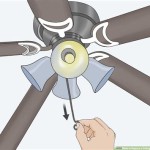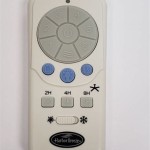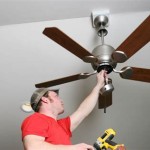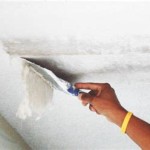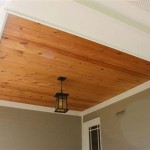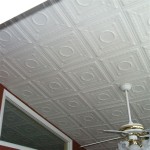Tips for Hanging Bed Curtains From the Ceiling: Ideas and Techniques
Hanging bed curtains from the ceiling offers a myriad of aesthetic and practical benefits. It transforms a sleeping space into a cozy sanctuary, adding a touch of elegance, privacy, and even functionality by blocking light and drafts. The process, however, requires careful planning and execution to ensure safety, stability, and the desired visual effect. This article explores various methods and tips for hanging bed curtains from the ceiling, providing guidance for achieving a stylish and functional bedroom enhancement.
Before initiating the installation, a thorough assessment of the ceiling is crucial. Consider the type of ceiling material (drywall, plaster, concrete) as this dictates the type of hardware needed. Drywall, being the most common, requires specific drywall anchors for secure fastening. Plaster, often found in older homes, can be brittle and may require more delicate drilling techniques and specialized anchors. Concrete ceilings necessitate the use of a hammer drill and concrete screws.
Furthermore, the weight of the curtains should be carefully considered. Lightweight fabrics like voile or cotton will exert less stress on the ceiling than heavier materials such as velvet or blackout fabrics. This weight consideration directly influences the choice of mounting hardware and the number of support points required. Overestimating the weight and choosing robust hardware is always a safer strategy than underestimating and risking the curtains collapsing.
Choosing the Right Hardware
The selection of appropriate hardware is paramount for a successful and safe installation. Several options are available, each with its own advantages and disadvantages. These include curtain rods, tracks, and individual hooks or rings.
Curtain Rods: Curtain rods provide a traditional and visually appealing solution. Ceiling-mounted curtain rod brackets are available in various styles and finishes, allowing for customization to match the room's decor. When choosing a curtain rod, ensure it is sturdy enough to support the weight of the curtains and is long enough to span the desired area. For larger beds or canopy-style installations, multiple rods may be required, joined together with connectors for a seamless appearance. The diameter of the rod should also be considered, as thicker rods are typically stronger and more visually substantial.
Curtain Tracks: Curtain tracks offer a more streamlined and flexible approach. They are typically made of metal or plastic and allow the curtains to glide smoothly along the track. This is particularly beneficial for large or heavy curtains, as it distributes the weight more evenly. Curtain tracks can be bent or cut to fit specific spaces, making them ideal for irregularly shaped rooms or custom installations. They are also a good option for creating a more modern or minimalist look, as they are less visually obtrusive than curtain rods.
Hooks and Rings: Individual hooks and rings offer the most customizable and often the most cost-effective option. Small hooks or rings are attached directly to the ceiling using screws and anchors, and the curtains are then hung from these. This method allows for precise placement of the curtains and is particularly useful for creating unique designs or for hanging curtains in areas where a rod or track is not feasible. However, this method requires careful planning and precise measurements to ensure the curtains hang evenly.
For all hardware options, quality is key. Opt for well-made brackets, tracks, hooks, and anchors that are designed to withstand the weight of the curtains and the stresses of regular use. Avoid using cheap or flimsy hardware, as this can lead to the curtains falling down or causing damage to the ceiling.
Installation Techniques
The installation process varies depending on the chosen hardware, but some general principles apply. Accuracy in measurement and marking is essential for a professional-looking result. A level and measuring tape are indispensable tools.
Planning and Marking: Before drilling any holes, meticulously plan the layout of the curtains. Determine the desired position of the curtains relative to the bed and the ceiling. Use a measuring tape and a level to mark the locations for the mounting hardware. Ensure the marks are evenly spaced and aligned to create a symmetrical and balanced appearance. Consider using a laser level for increased accuracy, especially for longer spans.
Drilling Pilot Holes: Once the marks are in place, drill pilot holes into the ceiling. The size of the pilot hole should be slightly smaller than the diameter of the screws or anchors being used. For drywall ceilings, use a drill bit designed for drywall. For plaster ceilings, use a masonry drill bit with caution, as plaster can crack easily. For concrete ceilings, use a hammer drill with a concrete drill bit. Always wear safety glasses and a dust mask when drilling into the ceiling.
Installing Anchors and Brackets: After drilling the pilot holes, insert the appropriate anchors into the holes. For drywall ceilings, use drywall anchors that are designed to expand and grip the drywall. For plaster ceilings, use plaster anchors that are specifically designed to minimize cracking. For concrete ceilings, use concrete screws that are designed to thread directly into the concrete. Once the anchors are in place, attach the brackets or hooks to the ceiling using screws. Tighten the screws securely, but avoid over-tightening, as this can damage the ceiling or the hardware.
Hanging the Curtains: Once the hardware is securely installed, hang the curtains. If using a curtain rod, slide the curtain rings or grommets onto the rod and then place the rod into the brackets. If using a curtain track, attach the curtain hooks to the curtains and then slide the hooks into the track. If using individual hooks or rings, attach the curtains directly to the hooks or rings. Ensure the curtains hang evenly and that the hems are at the desired length.
During the installation process, it's often beneficial to have an assistant. A second pair of hands can help hold the curtains in place, ensure the hardware is aligned, and prevent accidents. Furthermore, if dealing with heavy curtains or complex installations, consider hiring a professional installer to ensure the job is done safely and correctly.
Creative Curtain Arrangement Ideas
Beyond the practical considerations of installation, the arrangement of the bed curtains offers ample opportunity for creative expression. The way the curtains are draped and positioned can dramatically alter the ambiance of the room.
Four-Poster Bed Simulation: Even without a traditional four-poster bed frame, ceiling-mounted curtains can create the illusion of one. By strategically placing curtain rods or tracks around the perimeter of the bed, curtains can be hung to mimic the classic four-poster silhouette. This allows for the visual impact of a four-poster bed without the need for bulky furniture.
Canopy Effect: Create a romantic and ethereal canopy effect by draping curtains from a single point above the center of the bed. The curtains can then cascade down around the bed, creating a soft and flowing enclosure. This is particularly effective with sheer or lightweight fabrics, which allow light to filter through and create a dreamy atmosphere. This method often uses a hoop secured to the ceiling, from which the fabric is draped.
Partial Enclosure: For a less dramatic effect, consider a partial enclosure by hanging curtains along only one or two sides of the bed. This can provide a sense of privacy and enclosure without completely blocking off the bed. This is a good option for smaller rooms where a full canopy might feel too overwhelming.
Color and Texture: The choice of fabric plays a crucial role in the overall aesthetic impact. Light and airy fabrics like voile or chiffon create a soft and romantic ambiance, while heavier fabrics like velvet or brocade add a touch of luxury and drama. The color of the curtains can also influence the mood of the room. Light colors like white or pastel shades create a bright and airy feel, while darker colors like navy or burgundy add warmth and intimacy. The texture of the fabric can also add visual interest. Consider using textured fabrics like linen or silk to create a more tactile and inviting space.
Beyond these specific ideas, consider the overall style of the room when choosing the arrangement of the bed curtains. A minimalist room might benefit from a simple and understated curtain arrangement, while a more maximalist room might call for a more elaborate and dramatic design. Experiment with different arrangements and fabrics to find the perfect look for your space.
In summary, hanging bed curtains from the ceiling is a project that requires careful planning, the right tools, and a bit of creativity. By considering the type of ceiling, choosing appropriate hardware, and following proper installation techniques, it is possible to create a beautiful and functional sleeping space that enhances both the aesthetics and comfort of the bedroom.

Diy Ideas For Getting The Look Of A Canopy Bed Without New Apartment Therapy

Diy A Cozy Canopy By Hanging Fabric From The Ceiling Bed Bedroom Makeover

Diy Bed Canopy Kit Custom Ceiling Suspended Hanging Faux Four Poster Wire Curtain Rod For Bedroom Privacy Tent Alternative

February Diy Challenge Bedroom Canopy Dwell Beautiful

How To Hang A Canopy From The Ceiling Without Drilling Holes Hunker

10 S For Creating A Canopy Bed

Top Canopy Bed Curtains Best Ideas Tips Spiffy Spools

Diy Bed Canopy Kit Custom Ceiling Suspended Hanging Faux Four Poster Wire Curtain Rod For Bedroom Privacy Tent Alternative

February Diy Challenge Bedroom Canopy Dwell Beautiful

Bedroom Makeover Ceiling Curtains Naomi Peris
Related Posts

